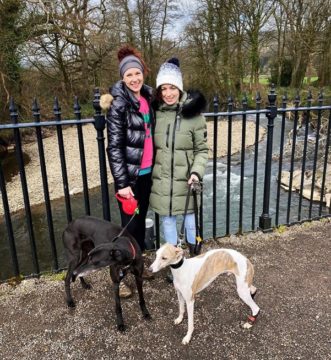‘Without some form of intervention, female couples simply cannot conceive’
#FertilityFairness
Lauren on what it is like to be one half of a same-sex couple trying to conceive

Holding my nephew for the first time four years ago was a pivotal moment for me and the desire to have a biological child has only continued to grow. I am married with a wonderful partner but as a biologically female couple I knew that getting pregnant was likely to be complicated.
In August 2018, we spoke to our GP who did not know whether we would qualify for NHS treatment. We were referred to gynaecology who then referred us to a fertility clinic. Time passed and by January 2021, there had been no further updates and I was fast approaching 35.
A unique sense of hopelessness
As we have gotten older, the waiting has become incredibly difficult. Without some form of intervention, female couples simply cannot conceive. There is no chance that against all odds we will fall pregnant the month we stop trying too hard or have intercourse on certain days. From my experience, this creates a unique sense of hopelessness that has, at times, felt consuming. How long can anyone wait indefinitely with no end in sight?
Known donors
It was around this time that research led us to the idea of finding a known donor and trying artificial insemination at home. We quickly discovered a vast community of donors and people who are working with them to create their families. This perhaps highlights the inadequacies of NHS fertility funding for many groups of people who cannot afford private treatment.
The media tries to portray women who use known donors as reckless and ill-conceived and no doubt some may be. However, this could not be further from our experiences of people in this community. There are no financial gains for known donors and their reasons for helping others are diverse. After talking to several donors, we were fortunate to find an excellent match.
After the necessary health checks, we began the sometimes-gruelling process of tracking my cycles and using artificial insemination for six months. Sadly, I did not fall pregnant, but those cycles gave us a new sense of hope on our journey that we will always be grateful for.
Defining sub-fertility for same-sex couples
In September 2021, we were contacted by the NHS fertility clinic and have an initial consultation booked. Whether same-sex female couples have ‘subfertility’ only has one obvious answer to me, however this is not necessarily the case when it comes to meeting criteria for NHS funding across the UK.
Having only had six cycle attempts to conceive, it is not clear whether I have any medically-defined fertility problems. However, working with a known donor means that attempts are not unlimited which can add a sense of increased pressure to the process.
So that is our trying to conceive story so far and on I’m sure it will continue. Whatever path we choose there will likely be judgement from others. We will continue to do our best to make decisions that will protect any future children’s psychological wellbeing and sense of self, while believing that there is no such thing as the ‘perfect family’ or ‘perfect conception’ for any child in this world. For anyone else going through this journey, we can do this.
